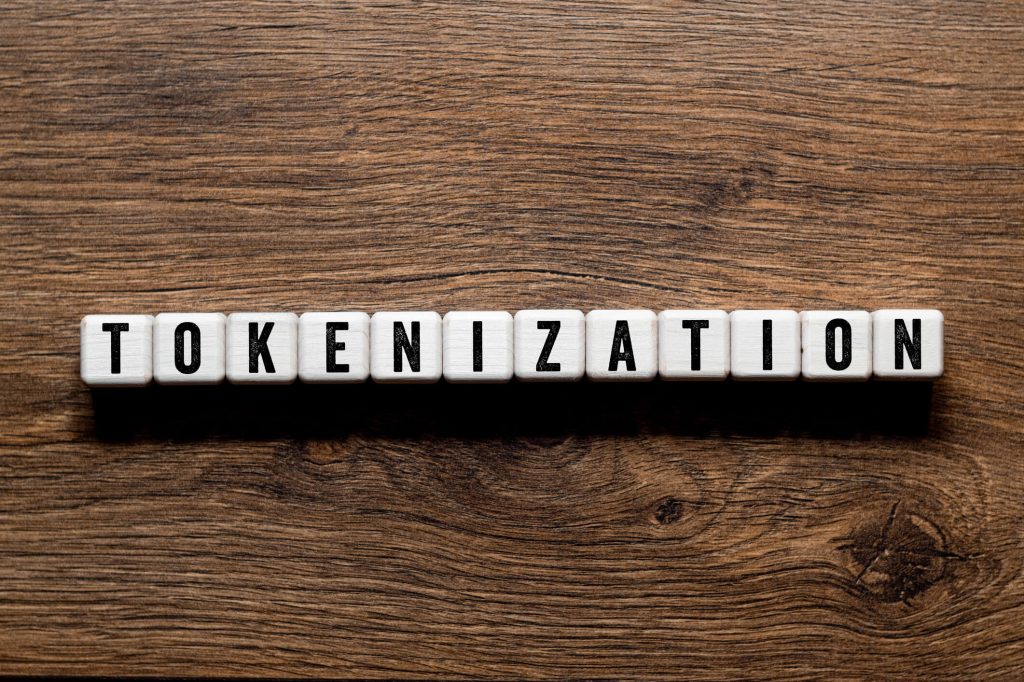
By alphacardprocess August 22, 2024
In today’s digital age, online transactions have become an integral part of our daily lives. From shopping to paying bills, people rely heavily on payment gateways to securely process their transactions. However, with the increasing number of cyber threats and data breaches, the need for robust security measures in high-risk payment gateways has become paramount. One such security measure is tokenization.
Tokenization is a process that replaces sensitive payment card data with a unique identifier, known as a token. This token acts as a surrogate value for the actual card data, making it useless to hackers even if they manage to intercept it. In high-risk payment gateways, where the risk of data breaches is significantly higher, tokenization plays a crucial role in ensuring the security and integrity of sensitive customer information.
Understanding High-Risk Payment Gateways and their Challenges
High-risk payment gateways are specifically designed to cater to businesses operating in industries with a higher risk of fraud or chargebacks. These industries include online gambling, adult entertainment, pharmaceuticals, and more. Due to the nature of their operations, these businesses face unique challenges when it comes to payment processing.
One of the primary challenges faced by high-risk businesses is the higher likelihood of fraudulent transactions. Fraudsters often target these industries due to the perceived anonymity and ease of conducting illicit activities. Additionally, chargebacks, which occur when a customer disputes a transaction and requests a refund, are more common in high-risk industries. These chargebacks can result in financial losses and damage to the reputation of the business.
To mitigate these challenges, high-risk payment gateways need to implement robust security measures that protect sensitive customer data and prevent fraudulent transactions. Tokenization is one such measure that has proven to be highly effective in addressing these challenges.
What is Tokenization and How Does it Work?

Tokenization is a process that replaces sensitive payment card data, such as the card number, expiration date, and CVV, with a unique identifier called a token. This token is randomly generated and has no mathematical relationship to the original card data. It is stored securely in a token vault, while the actual card data is encrypted and stored separately.
When a customer initiates a transaction, the payment gateway receives the token instead of the actual card data. The token is then used to retrieve the encrypted card data from the token vault. This data is decrypted and processed for authorization and settlement. Throughout this process, the sensitive card data remains secure and inaccessible to anyone without the proper authorization.
Benefits of Tokenization in High-Risk Payment Gateways
Implementing tokenization in high-risk payment gateways offers several benefits for both businesses and customers. Let’s explore some of these benefits in detail:
- Enhanced Security: Tokenization provides an additional layer of security by ensuring that sensitive card data is never stored or transmitted in its original form. Even if a hacker manages to intercept the token, it is useless without access to the token vault and the encryption keys.
- Reduced PCI DSS Scope: The Payment Card Industry Data Security Standard (PCI DSS) is a set of security standards that businesses must comply with to protect cardholder data. By implementing tokenization, businesses can significantly reduce their PCI DSS scope, as the sensitive card data is no longer stored within their systems.
- Simplified Compliance: Tokenization simplifies the compliance process by reducing the number of systems and processes that need to be audited for PCI DSS compliance. This can save businesses time and resources, allowing them to focus on their core operations.
- Improved Customer Experience: Tokenization eliminates the need for customers to repeatedly enter their card details for recurring transactions. Once the initial transaction is tokenized, subsequent transactions can be processed using the token, providing a seamless and convenient experience for customers.
- Fraud Prevention: Tokenization helps prevent fraudulent transactions by rendering stolen card data useless. Even if a hacker gains access to the token, they cannot use it to make unauthorized transactions without access to the token vault and encryption keys.
Implementing Tokenization: Best Practices and Considerations
While tokenization offers significant benefits, its successful implementation requires careful planning and consideration. Here are some best practices and considerations for implementing tokenization in high-risk payment gateways:
- Choose a Reliable Tokenization Solution: Select a tokenization solution that is reliable, secure, and compliant with industry standards. Look for a solution that offers robust encryption, secure token storage, and seamless integration with your existing payment infrastructure.
- Evaluate Tokenization Providers: Conduct thorough research and evaluate different tokenization providers before making a decision. Consider factors such as their reputation, experience, customer reviews, and the level of support they offer.
- Assess Integration Requirements: Ensure that the tokenization solution seamlessly integrates with your existing payment gateway and other systems. Compatibility and ease of integration are crucial to minimize disruptions to your operations.
- Develop a Tokenization Strategy: Define a clear tokenization strategy that outlines which card data elements will be tokenized and how the tokens will be managed and stored. Consider factors such as token lifecycle management, tokenization key management, and tokenization vault security.
- Educate Staff and Customers: Train your staff on the benefits and processes of tokenization to ensure smooth adoption and implementation. Educate your customers about the security measures in place and the benefits they can expect from tokenization.
Addressing Security Concerns in Tokenization
While tokenization provides enhanced security, it is essential to address potential security concerns to ensure the integrity of sensitive customer data. Here are some key security considerations when implementing tokenization:
- Secure Token Storage: Ensure that the token vault, where the tokens are stored, is secure and protected from unauthorized access. Implement strong access controls, encryption, and regular security audits to maintain the integrity of the token vault.
- Encryption Key Management: Proper management of encryption keys is crucial to the security of tokenization. Implement robust key management practices, including secure key storage, key rotation, and key access controls.
- Secure Transmission: When transmitting tokens between systems or parties, ensure that the communication channels are secure. Use secure protocols such as HTTPS and implement encryption to protect the tokens during transit.
- Regular Security Audits: Conduct regular security audits to identify and address any vulnerabilities in the tokenization process. Engage third-party security experts to perform penetration testing and vulnerability assessments to ensure the robustness of your tokenization implementation.
Tokenization vs. Encryption: A Comparative Analysis
Tokenization and encryption are both widely used security measures in the payment industry. While they serve similar purposes, there are key differences between the two. Let’s compare tokenization and encryption to understand their strengths and weaknesses:
- Data Protection: Both tokenization and encryption protect sensitive data, but in different ways. Tokenization replaces the data with a token, while encryption transforms the data into an unreadable format. Tokenization offers an additional layer of security by ensuring that the original data is never stored or transmitted.
- Scope of Protection: Encryption protects data at rest and in transit, ensuring its confidentiality. Tokenization, on the other hand, protects data at rest by replacing it with a token. However, when transmitting tokens, encryption is still required to maintain their security.
- Compliance Requirements: Tokenization can help reduce the scope of PCI DSS compliance, as the sensitive card data is not stored within the business’s systems. Encryption, on the other hand, requires businesses to implement and maintain strong encryption practices to comply with industry standards.
- Ease of Implementation: Tokenization is generally easier to implement compared to encryption, as it does not require businesses to manage encryption keys or implement complex encryption algorithms. However, encryption provides more flexibility and control over data protection.
Frequently Asked Questions (FAQs)
Q.1: What is the difference between tokenization and encryption?
Tokenization replaces sensitive data with a unique identifier called a token, while encryption transforms the data into an unreadable format. Tokenization provides an additional layer of security by ensuring that the original data is never stored or transmitted.
Q.2: How does tokenization reduce the scope of PCI DSS compliance?
Tokenization reduces the scope of PCI DSS compliance by removing the sensitive card data from the business’s systems. As a result, businesses are not required to implement and maintain complex encryption practices for the stored data.
Q.3: Can tokenization prevent all types of fraud?
While tokenization provides enhanced security, it cannot prevent all types of fraud. It is essential to implement additional security measures, such as fraud detection systems and transaction monitoring, to effectively prevent fraudulent transactions.
Q.4: Is tokenization suitable for all businesses?
Tokenization is suitable for businesses that process a significant volume of online transactions and handle sensitive customer data. It is particularly beneficial for high-risk industries where the risk of data breaches and fraudulent transactions is higher.
Conclusion
Tokenization plays a crucial role in ensuring the security and integrity of high-risk payment gateways. By replacing sensitive card data with tokens, businesses can significantly reduce the risk of data breaches and fraudulent transactions. Tokenization offers enhanced security, simplified compliance, and improved customer experience.
However, it is essential to carefully plan and implement tokenization, addressing security concerns and considering best practices. Tokenization complements encryption in providing robust data protection, and businesses should evaluate their specific needs to determine the most suitable security measures. With the increasing importance of secure online transactions, tokenization is becoming an indispensable tool for businesses operating in high-risk industries.
